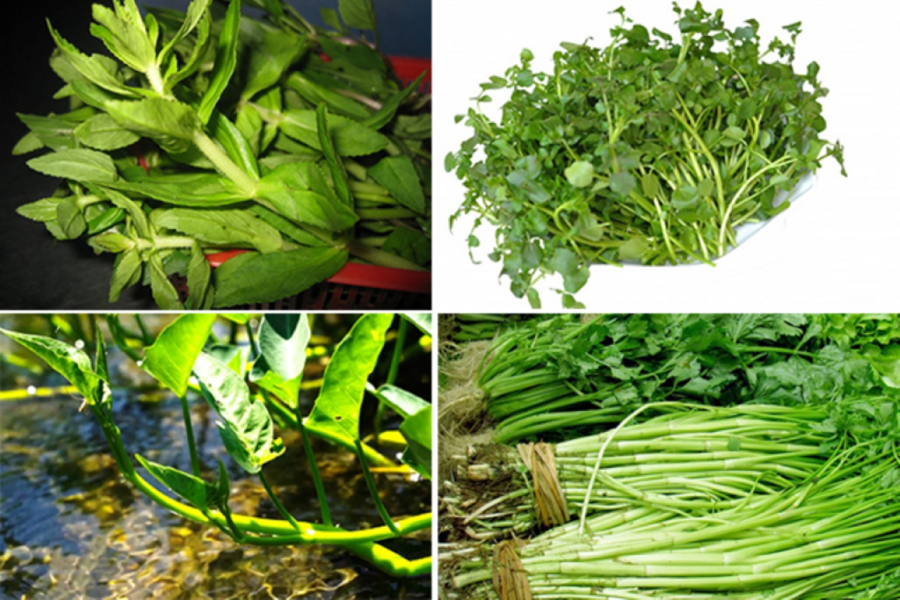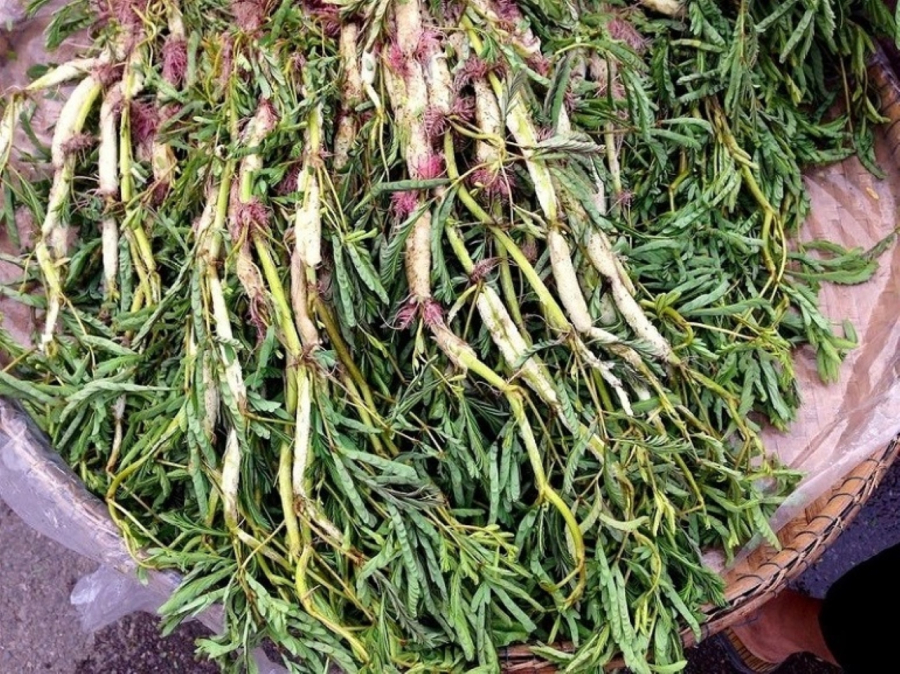What types of vegetables are prone to liver fluke infections?
According to Danviet, Dr. Le Van Thieu, from the Department of Infectious Diseases at the Central Hospital of Tropical Diseases, shared that the hospital frequently admits patients infected with liver flukes due to their daily habits and unhygienic eating practices. These individuals often harbor multiple types of flukes simultaneously.

Aquatic vegetables such as water spinach, water mimosa, watercress, celery, morning glory, and lotus stems are prone to having large liver flukes and intestinal flukes.
“Aside from some types that penetrate the skin, most flukes are transmitted through the consumption of contaminated food. The common cause is patients eating undercooked or unhygienic food containing fluke eggs or larvae,” Dr. Thieu explained.
Notably, according to this expert, aquatic vegetables such as water spinach, water mimosa, watercress, celery, morning glory, and lotus stems are particularly susceptible to large liver flukes and intestinal flukes.
“Many people have a habit of consuming these vegetables raw or briefly dipping them in hot pot water, believing that this retains their crispness. However, this practice fails to eliminate the flukes present in the vegetables, leading to potential fluke infections,” Dr. Thieu analyzed.

Water mimosa
How dangerous is a liver fluke infection?
Intestinal flukes are small flukes that parasitize the intestines of humans and some livestock, particularly pigs.
The flukes reproduce by laying eggs, which are then released in the host’s feces, contaminating water sources. After a period, the larvae develop and break out of the eggs, seeking a snail host.
Once inside the snail, the larvae continue to mature and develop a tail. They then leave the snail and attach themselves to aquatic plants such as water chestnuts, lotus roots, and taro stems.
“Individuals infected with intestinal flukes may experience symptoms like fatigue, occasional abdominal pain, and mild anemia. During the acute phase, patients may suffer from weight loss, anemia, irregular abdominal pain, and diarrhea with mucus and undigested food.
Diarrhea can persist for days or weeks, and abdominal pain is typically felt in the lower abdomen and can be intense, with abdominal distension, especially in children,” Dr. Thieu explained.
Meanwhile, large liver flukes can also lead to severe health conditions. Once ingested, the cysts release larvae in the stomach and duodenum.
These larvae penetrate the duodenal wall, enter the abdominal cavity, and migrate to the liver, where they mature and develop. During their parasitic life in the liver, large liver flukes secrete toxins that damage liver tissue and can cause liver abscesses.
Dr. Thieu advised that people ensure they consume thoroughly cooked food. Especially with aquatic vegetables, it is crucial to avoid eating them raw or undercooked; instead, cook them thoroughly to eliminate the risk of parasitic infections.
Additionally, proper waste disposal, confining livestock instead of letting them roam freely, and thoroughly washing and soaking vegetables in diluted saltwater (which can kill or damage fluke eggs in the aquatic environment) are essential preventive measures.






























